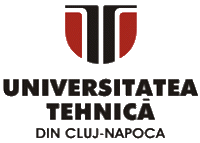Scientific Bulletin Series C, Volume XXXIII (2019)
Systematization of Manufacturing Technologies through the Use of Group Technology
Vladimir Bardai, Mircea Lobontiu
Abstract: Manufacturing technology represents a set of processes, activities, methods, procedures, rules, operations, and technical conditions, which happen in order to obtain a certain product (part, machine body, industrial construction or of a different nature). The current literature presents an industrial need for optimization of the manufacturing processes. We designed a detailed study which tackles manufacturing technologies and processes that refer to small series and unique (individual). The diverse requirements within the industrial field, push this type of production to a continuous development. Therefore, the objectives of this study are to establish components families, code, classify, and determine a common manufacturing technology which will reduce resulted variation of the manufacturing process.
Keywords: experimental, fabrication, group, process, similarity, technology
Theoretical Model of Heat Flow in the Roof of the Maramures (MM) Tiny House
Adi Ben-Senior
Abstract: This paper is a thermal performance research of the roof in MM tiny house. The entire research is currently on going and providing a model of heat transfer via convection and conduction for passive and NZEB house design. The contribution of the research is to provide a deeper understand of the heat flow and the heat loss thru different shapes and how these can provide a new aspect in design of houses under tighter requirements for energy performance in the context of global warming.
Keywords: MM tiny house, roof, pitch, thermal performance, heat, speed, NZEB
Comparative Study on Milling Complex Curved Surfaces with Ball Nose End Mill and Toroidal End Mill
Marius Cosma, Timotei Groza
Abstract: This paper is based on a comparative study, for optimizing the process of finishing by milling complex curved surfaces. The objective of the work is to replace the ball nose end mills (BNEM with cutting edge disposal on spherical surface) with toroidal end mills (TEM with cutting edge disposal on toroidal surface), its purpose being to optimize time and costs of processing. This study will address aspects of the characteristics of the mills cutting tools used for milling complex curved surfaces, the description of spare parts requiring such processing from the company SC Ramira SA, Baia Mare, the implementation of the CAM/CNC programs and the analysis of the costs and time needed to finish specific surfaces with the two types of cutters.
Keywords: ball nose end mills (BNEM), complex curved surfaces, finishing by milling, toroidal end mills (TEM)
Optimization of the Bending Strength of Asymmetric Gears by better Design of the Joint Profile
Flavia Suciu
Abstract: The Asymmetric gears are involute profile teeth gears, designed as nonstandard gears with the aim of obtain better functional parameters like the efficiency, the transmission error, the specific sliding, the contact stress, the bending stress or another, resulting from those mentioned above, as a sum of terms multiplied by some coefficient which take in consideration how important for the designing objective is those one. For improve the behavior of the gears in meshing we have been developed many computer applications in order to design and also to study the geometrical and functional parameters. That offers the possibility, only by running the applications without any other costs, to change many times the designing parameters, analyzing the performances calculated, in order to find the perfect combination for better results. In this paper are presented some aspect about the influence of the joint profile design, of the pinion and of the gear, on the bending stress at the base of the asymmetric teeth.
Keywords: parametrical design, design applications, bending stress, joint profile
Study regarding the Printing of Metric Threads on a FDM 3D printer
Vlad Diciuc
Abstract: 3D printers are well known and widespread in several fields, such as architecture, design, mechanical and industrial engineering, constructions, medical, food, clothing, etc. The 3D printer has become a device almost as familiar as the paper printer. The technologies used for 3D printing are diverse and adapted to the functional requirements of the printed product as well as to the material used for printing correlated with the necessary costs. Printers with FDM (Fused Deposition Modeling) technology are an affordable segment in terms of both price and use, making this type of printer very popular with regular consumers, who use it most often to replace common worn or damaged components. This study focuses on the possibility of printing Metric type threaded surfaces on FDM type printers. The study presents experimental results and conclusions regarding the attempt to obtain these surfaces on printers and includes some recommendations towards printing such parts.
Keywords: 3D printing, FDM, ABS, threaded surfaces
About Designing of a Gripper with Two Adjustable Jaws
Liliana Drăgan, Andrei Gurzou
Abstract: The paper presents aspects related to the design of a gripper with two jaws, adaptable for different shapes and sizes of the handled objects. The aim of the design was to obtain solutions that were as simple and easy to process as possible, to meet a wide range of uses. The finite element analysis established the deformations, stress and displacements of the fixing elements, in three options of loading. Then some considerations were presented on the technological process of manufacturing the gripping device and conclusions were drawn regarding the suitability of using it.
Keywords: Constructive design, gripping system, manufacturing process
Aspects of Experimental Research Management to Study Water Jets Used in Sewer Cleaning
Nicolae Medan
Abstract: Industrial cleaning is an application of water jets technology. The functioning of sewer cleaning equipment is it depends on a series of parameters that can be modified as needed. The impact force influences the cleaning process. To measure the impact forces in laboratory conditions, are required equipment for generating water jets and measuring the impact force. The full factorial design is the research method used in the experiment. In the start of the research was made a screening of the process using Taguchi method. Finally, a regression equation is obtained that calculates the value of the impact forces of the jet for the studied experimental field. The paper presents the steps necessary to achieve an experimental research management in general and for the cleaning head sewer system in particular.
Keywords: water jets, impact forces, design of experiment
Smart Cities as a Driver for Sustainable Development
Sorin Pop, Mircea Lobontiu, Gabriela Lobontiu
Abstract: Cities are, according to the European Commission, the most agile and relevant sub-national level entity, capable of creating economic, societal, and human development value. From their birth, almost 10.000 years ago, cities acted like living organisms, going through transformational changes. In the last 2000 years, the urban population grew from 10 to 60% of the world’s population, raising sustainability, security, health, and environmental challenges. From market or factory-centered approaches to technology and people, Cities and currently Smart (Sustainable) Cities have evolved stimulating the uptake of digitalization, technology, creativity, and innovation. This article proposes an overview of smart city evolution, metrics, and key performance indicators aiming at shaping, comparing, and supporting the development of climate-change, self-aware, economically viable, and high quality of life participatory urban ecosystems. 3 generations of Smart Sustainable Cities are presented and compared.
Keywords: open innovation, smart city, sustainable city, sustainable development
Optimizing the Design of Vibrating Conveyors with Two Masses
Dinu Ioan Stoicovici, Miorița Ungureanu
Abstract: The usual construction solutions for vibrating conveyors can generate intense dynamic stresses transmitted in the vibrating system and on the ground, especially for long transport lengths. Zero amplitude points can also occur, which in turn produce clumps of material, thus reducing the useful transport length. Some of the technical solutions to solve these shortcomings are non-harmonic vibrations, whose behavior can be approximated with sufficient accuracy by composite harmonic vibration systems with a construction with one or two vibrating masses. They can provide long transport lengths with low energy consumption and low dynamic loads.
Keywords: vibrating conveyors, non-harmonic vibrations

